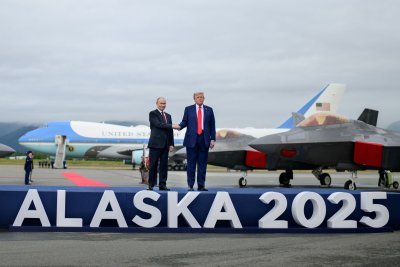Aug. 22 (UPI) — Russian spy planes entered U.S. air space near Alaska twice in the past three days, said North American Aerospace Defense Command, though it said the incidents weren’t out of the ordinary.
In separate incidents on Wednesday and Thursday, Russian IL-20 COOT surveillance and reconnaissance planes flew into the Alaskan Air Defense Identification Zone, prompting NORAD’s response, according to a statement. Neither plane flew into U.S. or Canadian airspace.
On Wednesday, NORAD launched a pair of F-16 Fighting Falcons and a KC-135 Stratotanker for refueling as they identified and monitored the Russian plane.
On the following day, NORAD again sent up two F-16s and a KC-135, along with an E-3 Sentry Airborne Warning and Control System aircraft to intercept and monitor the Russian IL-20. Both planes flew into the Alaskan Air Defense Identification Zone.
The Alaskan ADIZ, like other such zones, is a defined area of international airspace beginning at the edge of sovereign airspace around the state that requires any aircraft entering into it to be identified for national security reasons.
“This Russian activity in the Alaskan [airspace] occurs regularly and is not seen as a threat,” NORAD said about both incidents.
The timing and type of aircraft involved draw special attention. These intercepts happened less than a week after a meeting between Trump and Putin, in which the war in Ukraine was the central topic. The Russian flights are seen by U.S. defense officials as routine but underscore continued military posturing near American airspace.
While the U.S. Air Force frequently monitors Russian Tu-95 bomber flights in the area, the use of an Il-20, equipped for electronic intelligence gathering, is rarer, Newsweek reported.
“NORAD employs a layered defense network of satellites, ground-based and airborne radars and fighter aircraft to detect and track aircraft and inform appropriate actions. NORAD remains ready to employ a number of response options in defense of North America,” NORAD said in a press release.
“An ADIZ begins where sovereign airspace ends and is a defined stretch of international airspace that requires the ready identification of all aircraft in the interest of national security,” the release said.
Last month, NORAD intercepted two Russian Tu-95 Bear bombers and Su-35 Flanker fighter jets that were escorting them when they strayed into the ADIZ for some three hours.
